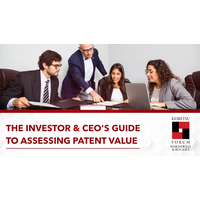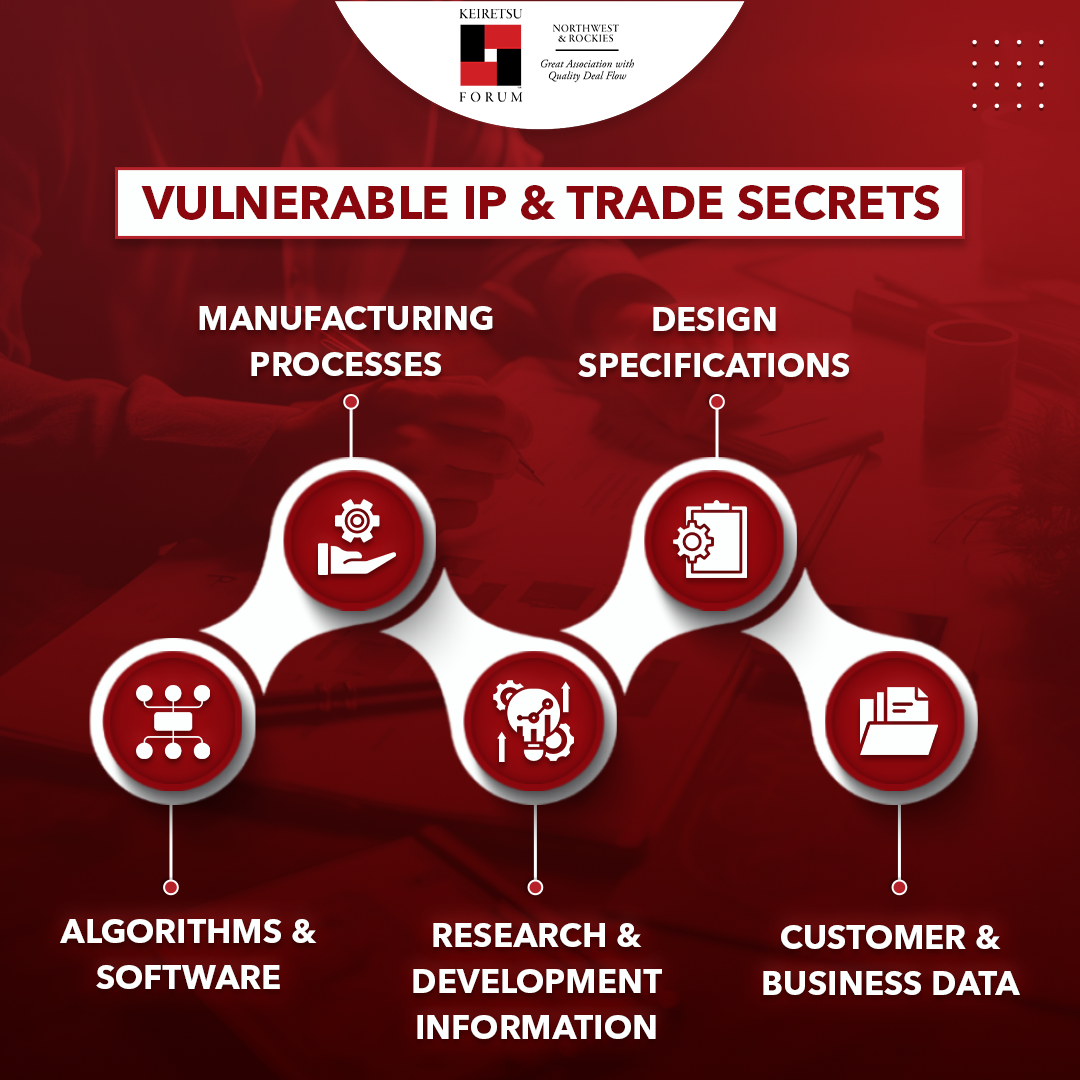
Innovation is the lifeblood of a successful company. But how do you translate groundbreaking ideas into lasting value? Patents offer a powerful tool, granting exclusive rights to your inventions. Yet, many investors and CEOs struggle to grasp the true worth of a patent portfolio.
Robert Aronoff, the Managing Partner and Founder of Pluritas shared his opinion on the importance of patents as we move forward to an innovation-driven future. This blog sheds light on the return of patent value, especially for small companies, and how to build a strong patent portfolio.
The General Consensus Surrounding Patents
Patents are essential for a business's longevity, but very few people today believe in their effectiveness. The general idea is that patents can be easily invalidated and are just “window-dressing.” Instead, entrepreneurs are relying more on their trade secrets.
However, the time is ripe for a renewed focus on patents and intellectual property protection in the United States and globally. Under the leadership of former USPTO Director Andrei Iancu, significant strides were made for a more rational and reasonable application of Section 101 of the Patent Act. The current U.S. political landscape features strong advocates for patent rights, emphasizing a strong drive for innovation and a recognition of the need to protect intellectual property. This is particularly crucial as other nations, notably China, aggressively defend their own innovations. The U.S. must follow suit to maintain its competitive edge.
Patents should be viewed as intellectual property rights and essential tools for protecting national economic interests. There is a growing awareness that investing in critical areas of innovation and safeguarding these innovations is vital for the benefit of investors, companies, and overall economic growth. This renewed focus on patents is crucial for fostering a robust innovation ecosystem.
The International Trade Commission (ITC) has remained a steadfast venue for patent enforcement with its changes in the U.S. patent system. This highlights the importance of focusing on material patents—those that are strategic and well-enabled. The era of broad, horizontal patent grabs is over; today's patents must be precise, strategic, and internationally relevant.
In today's globalized economy, relying solely on a U.S. patent portfolio is insufficient. Without international counterparts, companies leave significant value on the table. Developing a comprehensive international patent strategy is now essential for maximizing the value and protection of innovations.
The Strategic Value of Material Patents
Material patents are the ones focused strongly on the product category. They are about the true novelty of your innovation with minimum restrictions on how that novelty can be commercialized. These patents combine broad and narrow claims, well-written with clear language to support key terms, and are strongly backed by specifications.
Material patents hold immense strategic value for companies in the current business landscape. Here's why:
Funding Magnet: According to the National Venture Capital Association, companies with material patents are five times more likely to receive funding. This is because patents act as a bridge, providing transparency and assurance to investors in an environment where Non-Disclosure Agreements (NDAs) are prevalent. NDAs can be limiting; despite them, there's always a risk that your inventions and novelty might be inadvertently shared. Patents, however, allow you to publicly document your unique advantages without compromising confidentiality.
Acquisition Potential: Companies with strong patent portfolios are three times more likely to be acquired. This makes them highly attractive to potential buyers who recognize the value these patents bring.
Growth Engine: Studies show that companies with material patents are 3x more likely to deliver over $100 million in equity growth. This significant boost is a direct result of the competitive edge and licensing opportunities patents provide.
Unlocking Hidden Value: Patents represent considerable off-balance sheet value. Financial institutions are increasingly recognizing this value, opening doors to asset-backed loans. Essentially, your patents become a valuable asset that can be leveraged to secure additional funding.
Licensing Powerhouse: Material patents give you significant licensing leverage with customers and partners. This allows you to generate revenue by licensing your technology to others, creating a new income stream, and expanding your reach.
Vulnerability Without Protection: Companies without a strong patent portfolio are at a significant disadvantage. They're more susceptible to being copied by competitors and more likely to be sued for infringement. Patents provide a vital shield, deterring imitation and offering legal recourse if your innovations are violated.
Material patents are not just technical documents; they're strategic assets that can propel your business forward. By leveraging their power, you can secure funding, fuel growth, and establish a dominant position in your market.
Material Patents Insure Your Future
“I've worked supporting and advocating for the small companies I've worked in the Biz Dev and product management functions of large multinational companies when the small companies come in the door and we don't want to sign NDAs.” – Robert Aronoff.
Robert shares his experience working in product management divisions in big companies, watching them claim the innovations of small companies to move strategically. If small companies rely solely on their trade secrets, there are still ways to get around them and bleed them dry. There are also scenarios where entrepreneurs invent a core technology, discuss it with big companies, and then lose the chance to patent the technology. Ultimately, sharing confidential information without relevant patents prevents them from entering their core market.
To avoid such dire situations, Robert suggests protecting your material IP assets to block copyers and followers. Taking this step in the early stages of the business will also help accurately calculate the real-world valuation. There are circumstances when acquisition entities are valued solely on their patent portfolios. Even Special Purpose Acquisition Companies (SPACs) are looking for unicorns and hypergrowth while acquiring multiple companies to get the patent portfolio. There are cases of hybrid transactions, where company assets are sold in one direction while the patent is sold in another.
Building a Strong Material Patent Portfolio
The first step towards building a strong patent is deep ideation, which involves examining the product’s potential beyond its current applications. Any product that can adapt and solve future problems as efficiently as the current ones will stand the test of time.
Adopt a Long-Term Perspective
From the outset, consider the bigger picture. Ask yourself:
- Where will this core product or category be in 4-7 years? Anticipate future trends and adapt your patent strategy accordingly.
- Where geographically will patent rights be critical in 4-7 years? Consider your target markets and ensure coverage in those regions.
Leverage the PCT Process
Keep your options open efficiently and affordably by filing continuations via the Patent Cooperation Treaty (PCT) process. This approach provides flexibility in pursuing patent protection across multiple jurisdictions while deferring costs.
Run a Make vs. Buy vs. License Analysis
Carefully evaluate whether to develop technology in-house, acquire it from external sources, or license it from others. You should consider factors such as cost, time-to-market, and strategic fit with your overall IP strategy.
Smart Material Patent Strategy To Drive Valuable Business
Robert shared the following tips to summarize the best strategy for material patents:
Ideation with Protection in Mind
Start by integrating patent considerations from day one. This means filing for patents early and ensuring your ideas are thoroughly vetted and strategically aligned with your business goals. Early and aggressive protection can prevent competitors from encroaching on your innovations and establish a strong foundation for future growth.
Think Like a Product Line Manager
When considering your patent strategy, adopt the mindset of a product line manager rather than just a product manager. This broader perspective allows you to view your platform as a series of interconnected products, each with its potential for innovation and protection. By thinking in terms of a product line, you can identify more patent opportunities and create a more comprehensive and valuable intellectual property portfolio.
Don't Short-Trip the Investment
Investing in a robust patent strategy is not a short-term endeavor. It requires a commitment of time, resources, and strategic thinking. Cutting corners or underinvesting in your patent strategy can lead to missed opportunities and vulnerabilities. Patenting only costs almost 5% of the product development, and it is a small investment to protect your innovation.
Integrate Patent and Trade Secret Strategies
Patents and trade secrets are powerful tools, but they work best in tandem. Patents offer public protection for specific inventions, while trade secrets shield confidential know-how. By working these two strategies together, you can create a more resilient and versatile approach to protecting your intellectual property.
With the rising number of innovative solutions across all sectors, it is becoming imperative to file patents and secure the business. Robert’s perspective about material patents and the strategy to build them are helpful for all entrepreneurs who want to safeguard their ideas. With the growing global competition for ideating the next big disruptive idea, it is in the best interest of the founders and investors to protect their IPs with a material patent.
About the Speaker
Robert Aronoff is the Managing Partner and Founder of Pluritas LLC, a premier intellectual property advisory and transaction firm based in San Francisco, California. With over 25 years of experience, Rob has a distinguished career in leading product, strategy, and business development activities across various high-technology sectors. His extensive background includes operational roles at renowned companies such as Sun Microsystems (now part of Oracle), Eastman Kodak, Microsoft, Coopers & Lybrand, and Peat Marwick.
You can hear Robert Aronoff’s full keynote here: https://muse.ai/v/9ibPivE


